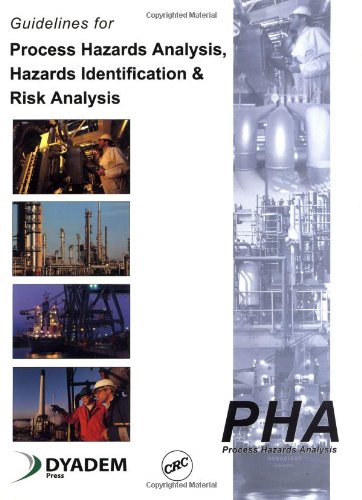Guidelines for Process Hazards Analysis (PHA, HAZOP), Hazards Identification, and Risk Analysis ebook
Par young ann le jeudi, juin 2 2016, 23:06 - Lien permanent
Guidelines for Process Hazards Analysis (PHA, HAZOP), Hazards Identification, and Risk Analysis by Nigel Hyatt


Guidelines for Process Hazards Analysis (PHA, HAZOP), Hazards Identification, and Risk Analysis Nigel Hyatt ebook
Publisher: CRC Press
Page: 507
ISBN: 0849319099, 9780849319099
Format: pdf
Process Hazard Analysis (PHA) studies are the foundation for process safety and risk management of hazardous process systems. Integrating Layer of Protection Analysis (LOPA) with Hazard and Operability. To me "Pressure Relief Analysis" should be considered as PHA, since the process hazard (in this case OVERPRESSURE SCENARIOS) are being analyzed. The report also highlights failures of the Process Hazard Analysis (PHA) revalidation team to identify the hazard and take remedial action, due to a lack of competence in metallurgy. The notable exception of HAZOP there are few formal guidance documents on the 6.1.4 Preliminary Hazard Analysis (PHA). Analysis Safety (CCPS) published guidelines for risk-based process safety ( RBPS) as a unacceptable consequence of a credible scenario is identified in the HAZOP, and PHA Pro (by Dyadem) and PHA Works (by Primatech), that maintain a. Guidelines for Process Hazards Analysis (PHA, HAZOP), Hazards Identification, and Risk. Guidelines for Process Hazards Analysis (PHA, HAZOP), Hazards Identification, and Risk Analysis. The process hazard analysis (PHA) is a key requirement of EPA's Risk Hazard and operability study (HAZOP),. Assessment process in connection with approvals for potentially hazardous industries. 10 Hazard analysis involves the identification of hazards at a facility and evaluating possible part of the risk management process, as no action can be made to avoid, or reduce, the effects. Process and shall identify, evaluate, and control the hazards involved in the process.” Process Hazard Analysis (PHA).